Update: See Part 2 and the reveal of our new tile floors in this post!
A few weeks ago after selecting our cabinet color at Lowe’s, I walked over to the tile section and immediately spotted this Leonia Sand porcelain tile:
It came in two sizes—12×24″ and 6×24″. I preferred the wood plank look so I decided on the 6×24″ ($2.29/ea). The price was reasonable and I thought it looked lovely against the cabinet color, and that it would also be a nice way to add warmth to all the white, black and gray.
Saturday at 7am we were at Lowe’s to buy all of the supplies, including a $90 wet saw (which ended up being too small for our tiles but we made it work anyway).
My dad has some experience in this arena so he was kind enough to offer to help for the day. We also did quite a bit of research along with consulting the staff at Lowe’s to help us figure out the best plan of attack.
The first step was to prepare the surface. We went with HardiBoard cement board—it’s a couple bucks more than the generic stuff but supposed to be much better.
I came up with this layout based on the room’s floor plan (which were based on measurements from before the demolition began that ended up being larger than the actual size, so we used only 9 boards instead of 10):
We had never worked with this stuff before so I didn’t know what I was in for, but it ended up being the easiest part. It breaks apart easily after scoring with a blade, so my job was to measure and score/cut the pieces to size…
while Brad and my dad screwed them into the plywood (using special cement board screws).
We were able to knock it out (problem free) in two hours. Teamwork!
Before setting the tile, we had to cover the seams with special mesh tape.
We did a dry test fit in a few areas to see if there would be any fitment issues. Fortunately, they lined up just perfectly that we didn’t need to make any tricky cuts between the transition to the storage room:
With our layout in place, we snapped a chalk line where the first row would be placed along the wall:
Then one by one, it was mastic + tile…
The troweling process immediately brought back memories from our kitchen wall tile installation.
This floor tile was definitely easier since they are larger pieces and you don’t have to fight gravity. We had these rows down in an hour:
Then things got a bit tricky. Since you can’t walk on freshly laid tile, we couldn’t just tile the storage room as there was no way out. So I had to become a bit of a gymnast—working in a counter clockwise pattern, planning my tiles and stepping in between empty patches until I could contort myself out of there.
Luckily it worked, and we had an efficient system running where my dad would cut the tiles, Brad would deliver them and help me spread mastic when needed, and I’d set the tiles. In 4.5 hours the room was done.
That’s 4.5 hours straight of crouching for me which doesn’t feel so great—but looking at our freshly tiled floor does!
They look quite a bit more gray in this room than in the store which I wasn’t expecting but I guess I don’t mind. They actually remind me a lot of our hardwood floors in the rest of the house.
Tomorrow we’ll finish them off with grout and then it’s on to the next project!

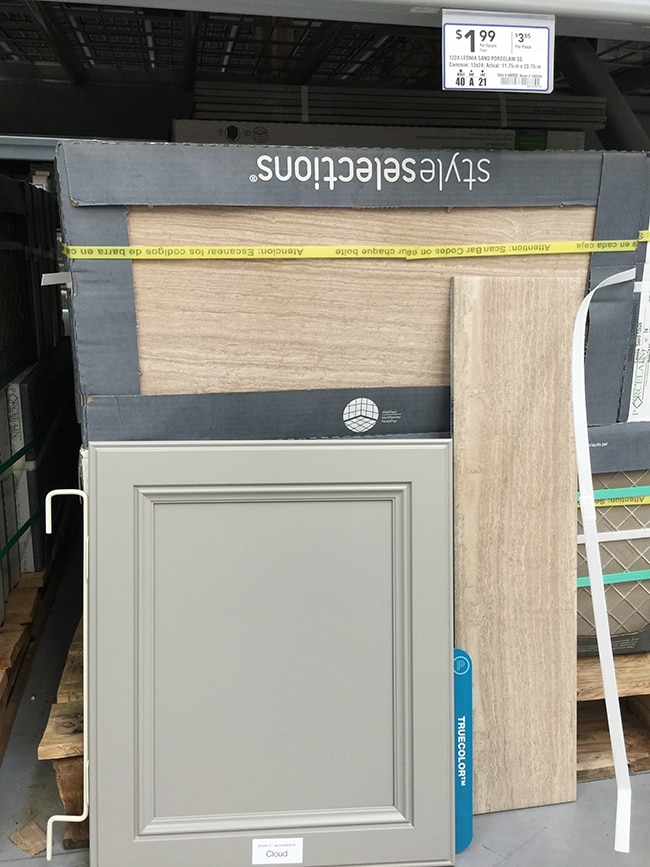
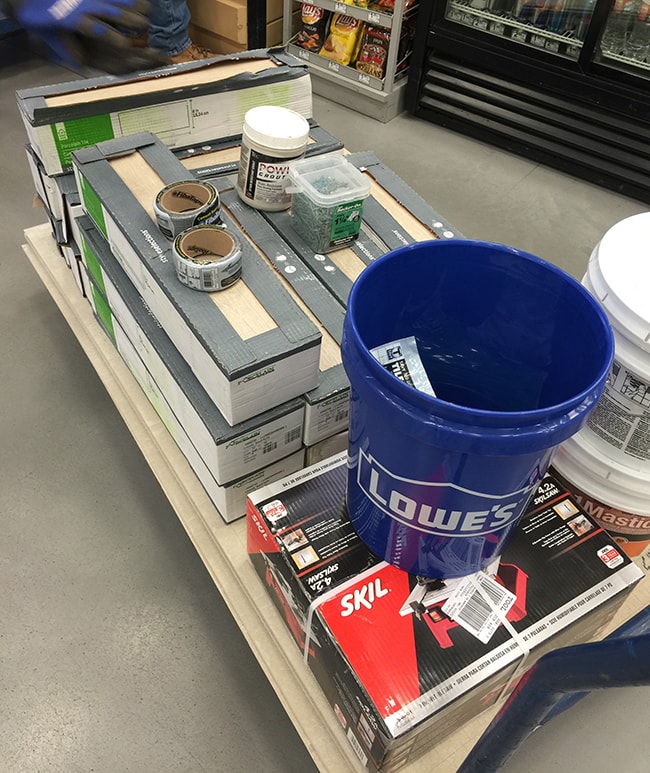
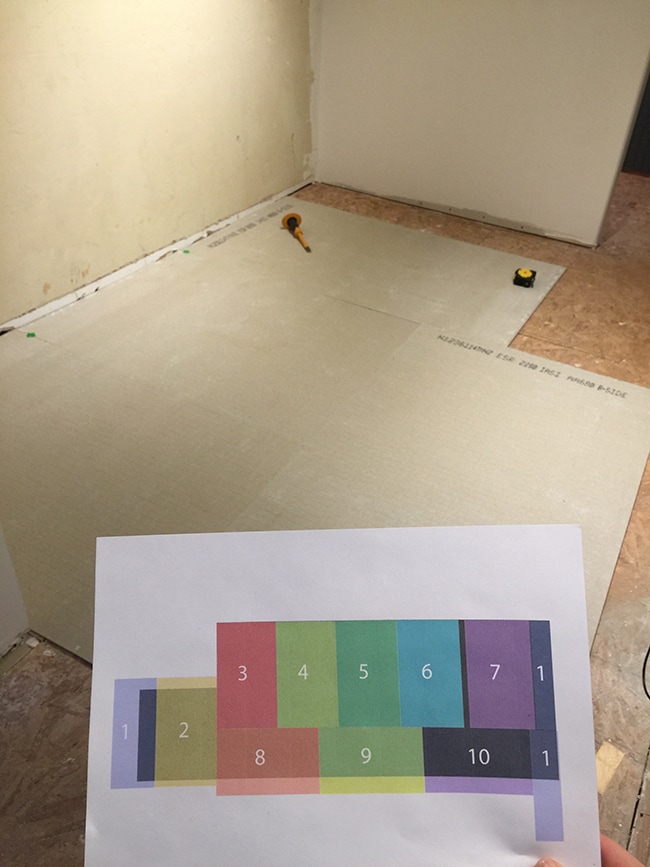
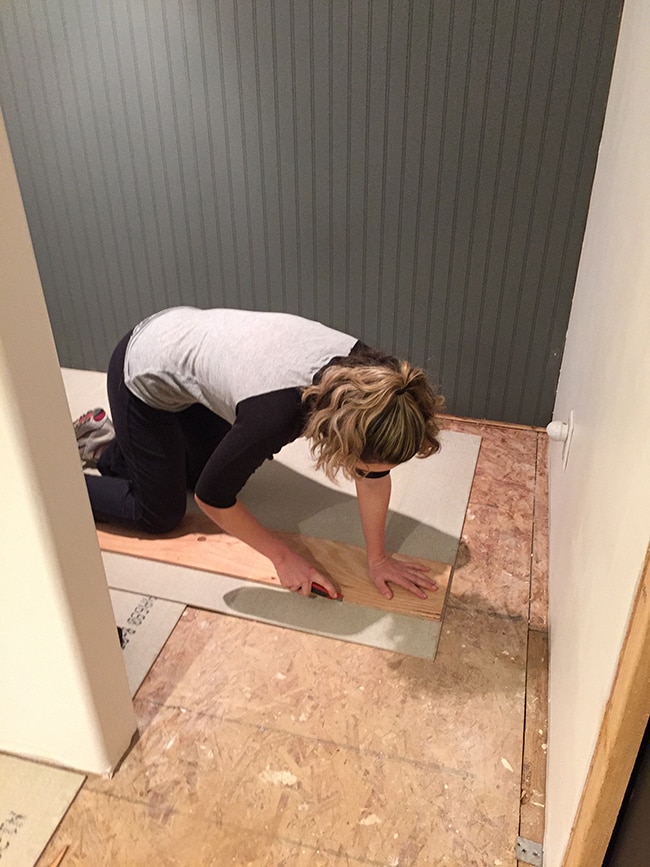
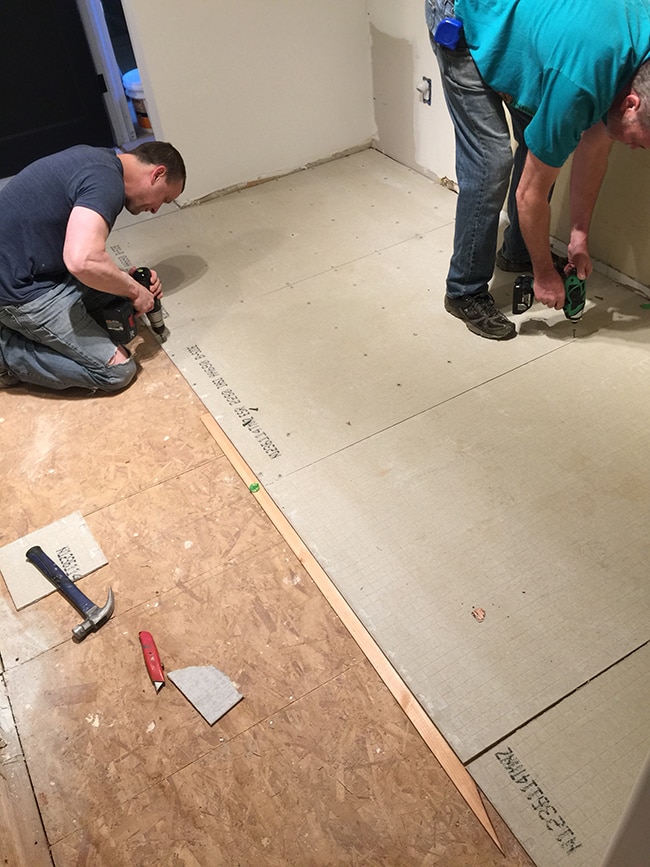
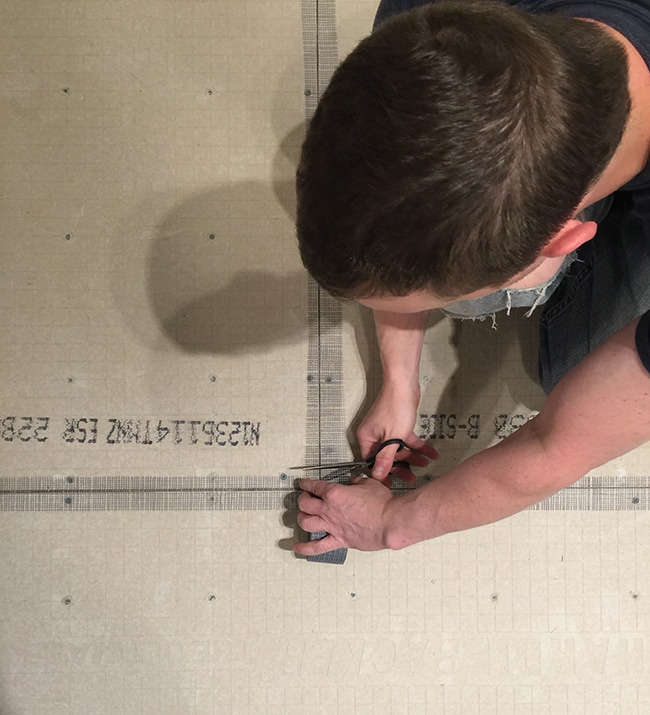
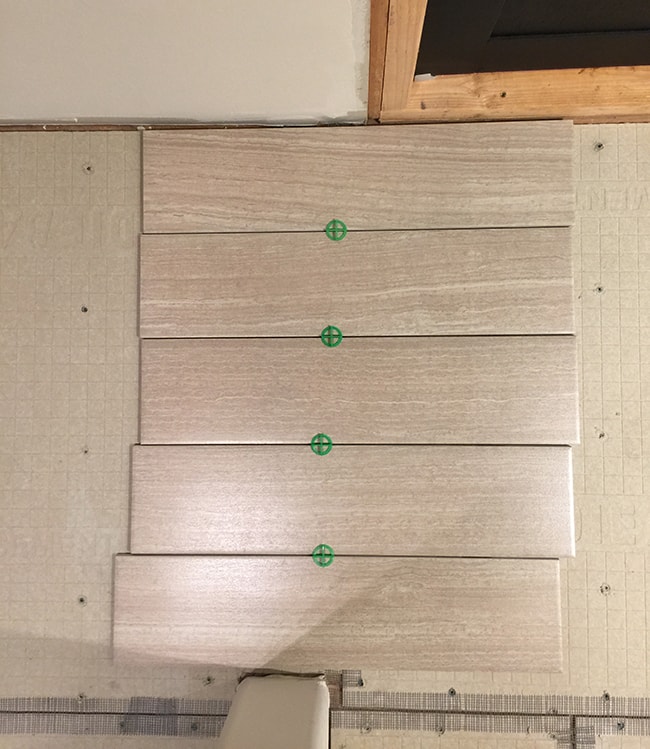
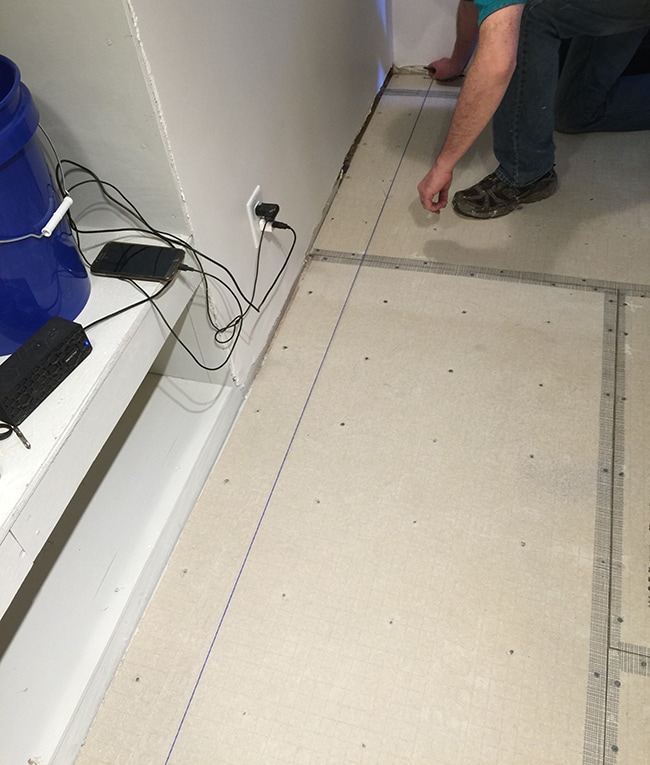
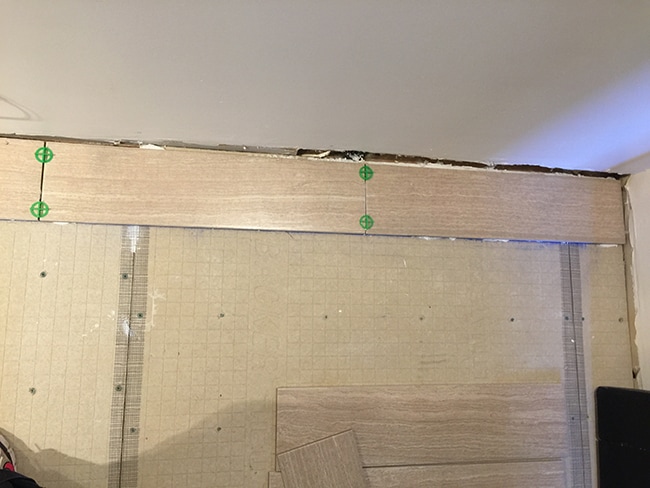
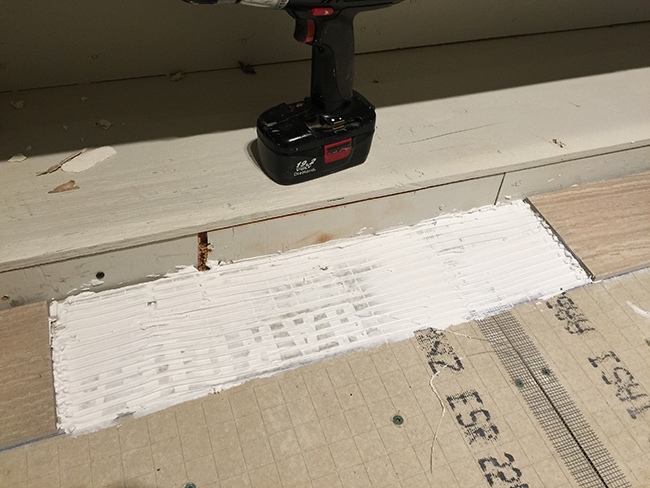
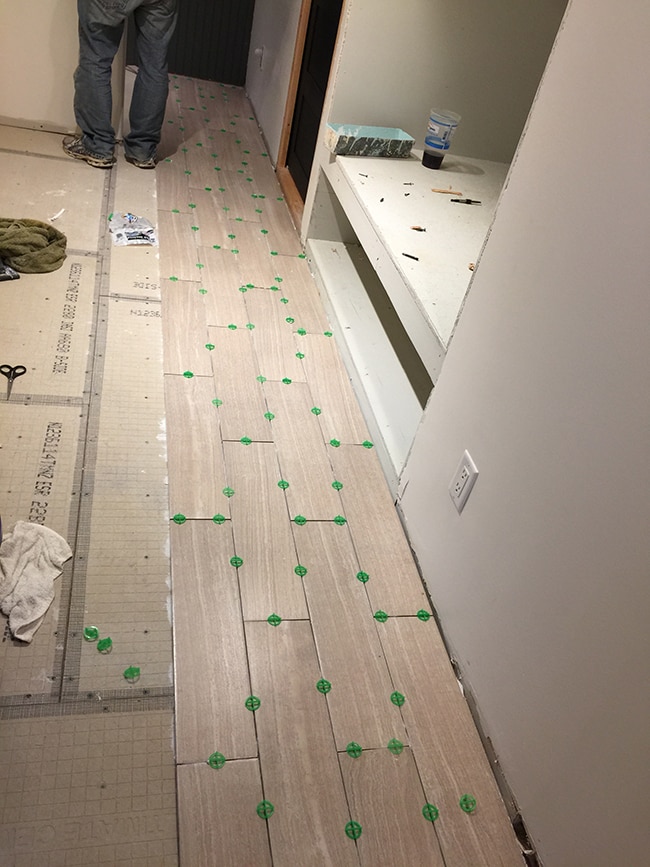
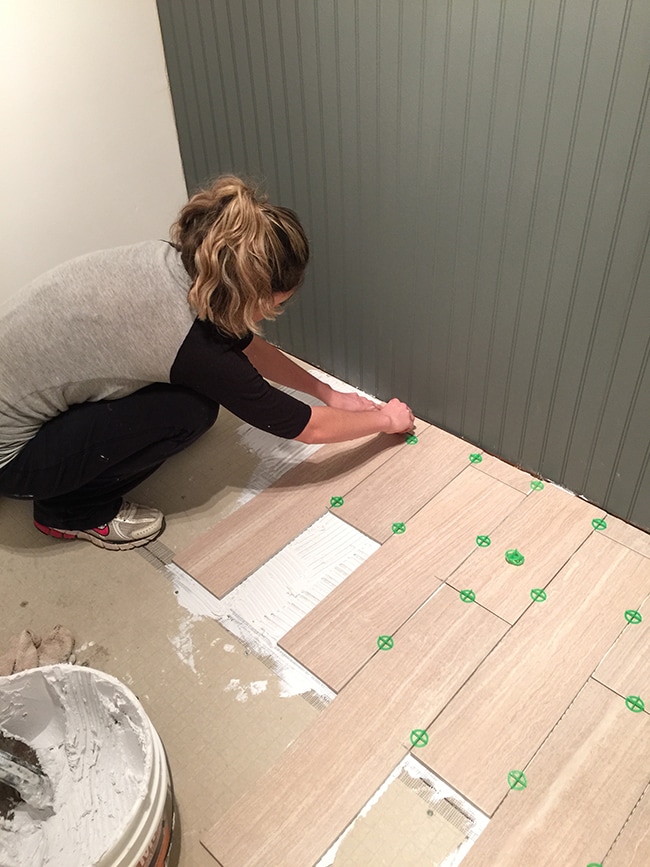
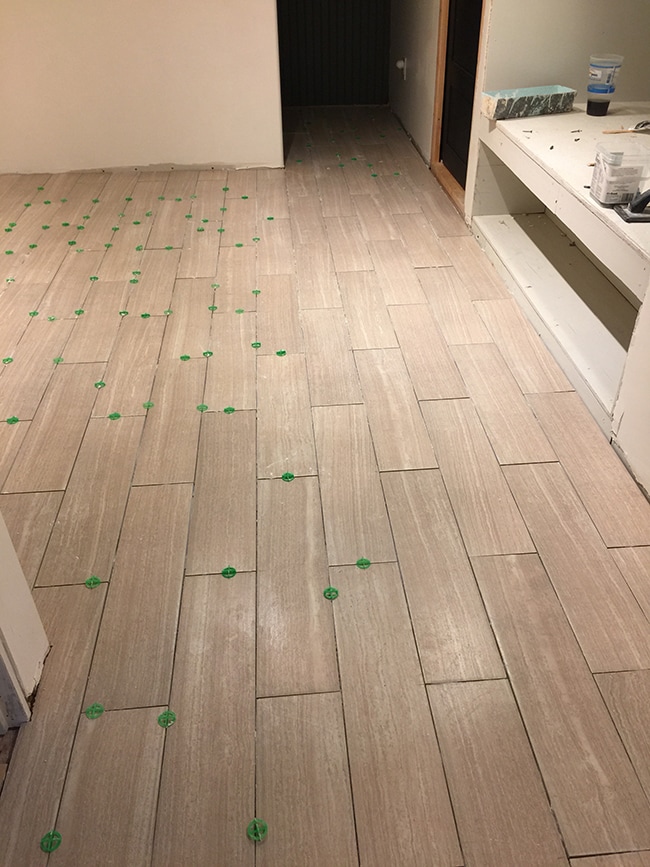
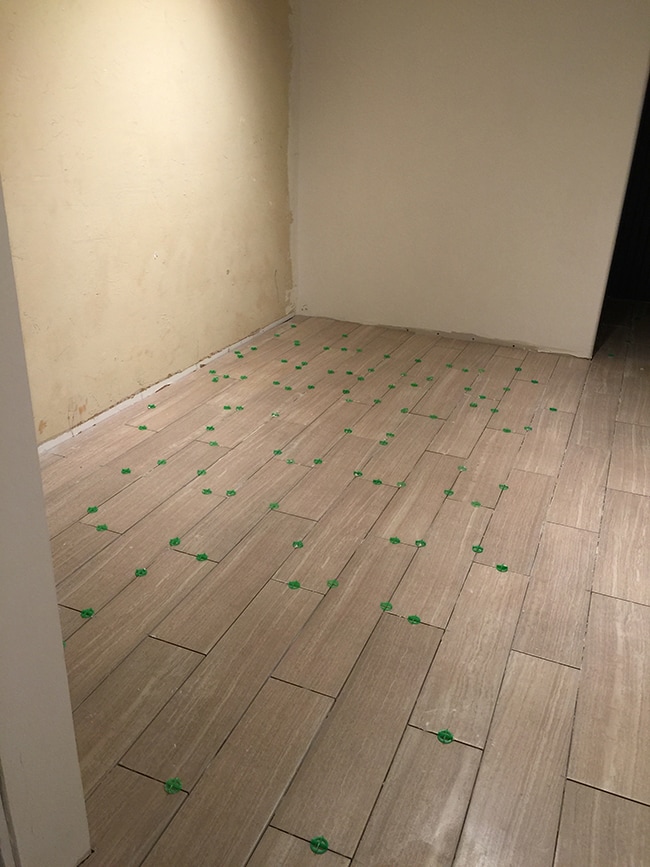

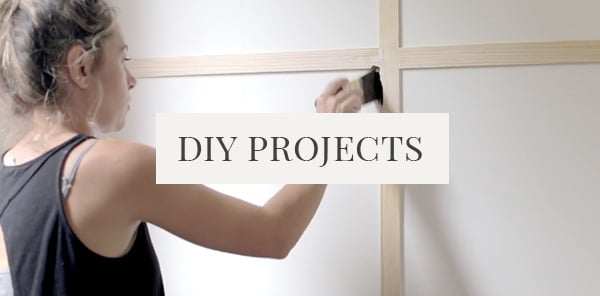
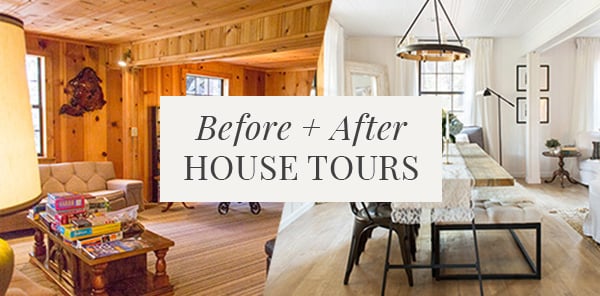


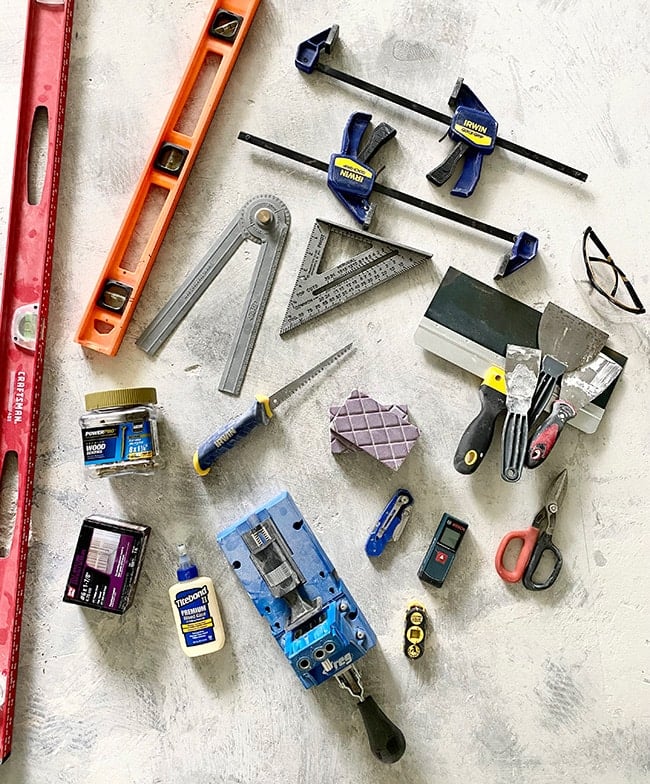
kristi shelly says
I love the tile and am wondering what color grout you used
jennasuedesign says
Hi Kristi, all the info is in the Part 2 post 🙂 https://www.jennasuedesign.com/2015/02/giveaway-winner-announced-laundry-room-floor-tile-part-2/
Emily, Our house now a home says
We are working on our laundry room too. Just finished tiling it. I love the tile you chose, lots of work… but do worth it!
Lauren says
The new tile looks great. Thanks for sharing in the progress of re-doing your laundry room. Looking forward to seeing what's next!
Jenna Sue says
Thanks so much for the info! Only time will tell now. At least I figure as much as I change my mind and like to renovate rooms, it shouldn't need to last more than 10 years or so before I end up replacing it with something new 😉
ilovedesign says
Hi Jenna, beautiful tile and WOW on the DIY aspect! I know you touched on this above but I wanted to respond in regards to the mastic underlayment since some readers may attempt to follow your process for their own DIY. We just laid Hardie for our bathroom floors- my husband is a contractor and did it himself. From his experience and all of our research on the material, the mastic base is a requirement not a recommendation. You need this to create a solid bond between the sub floor and the Hardie to prevent shifting and hollow spots over time. Actually much of my research from actual installers and contractors show this to be a code requirment so that's super important for proper install. The manufacturer does not list this as an optional step for install either which is important for your readers to understand if attempting on their own. I know you chose to skip it and not much you can do now, so I truly hope it lasts for you with no issues. But I wanted to point it out so others don't attempt the same process just in case. Materials are expensive and DIY is time consuming so I always try to follow the steps directly from the manufacturer or consult contractors who actually work with the product on a regular basis instead of taking the direction from the employees at a home improvement store who often are ill informed. Best of luck to you!
Jenna Sue says
Thanks Maureen! Yes, there's a “Follow by email” form on the new blog where you'll need to enter your email address for the updates: https://jennasuedesign.com/blog
Maureen says
Looks great. I love the tiles.
Do I need to re-subscribe if I currently get email updates? I don't want to miss the reveal!
Jenna Sue says
Thanks Karen! That wall is the first thing you see when you walk in and it's very visible so we wanted it to be perfect. Also the back (left) wall will be hidden under cabinets so if anything was off, it made more sense to have it there. I made the floor plan drawing in Illustrator 🙂